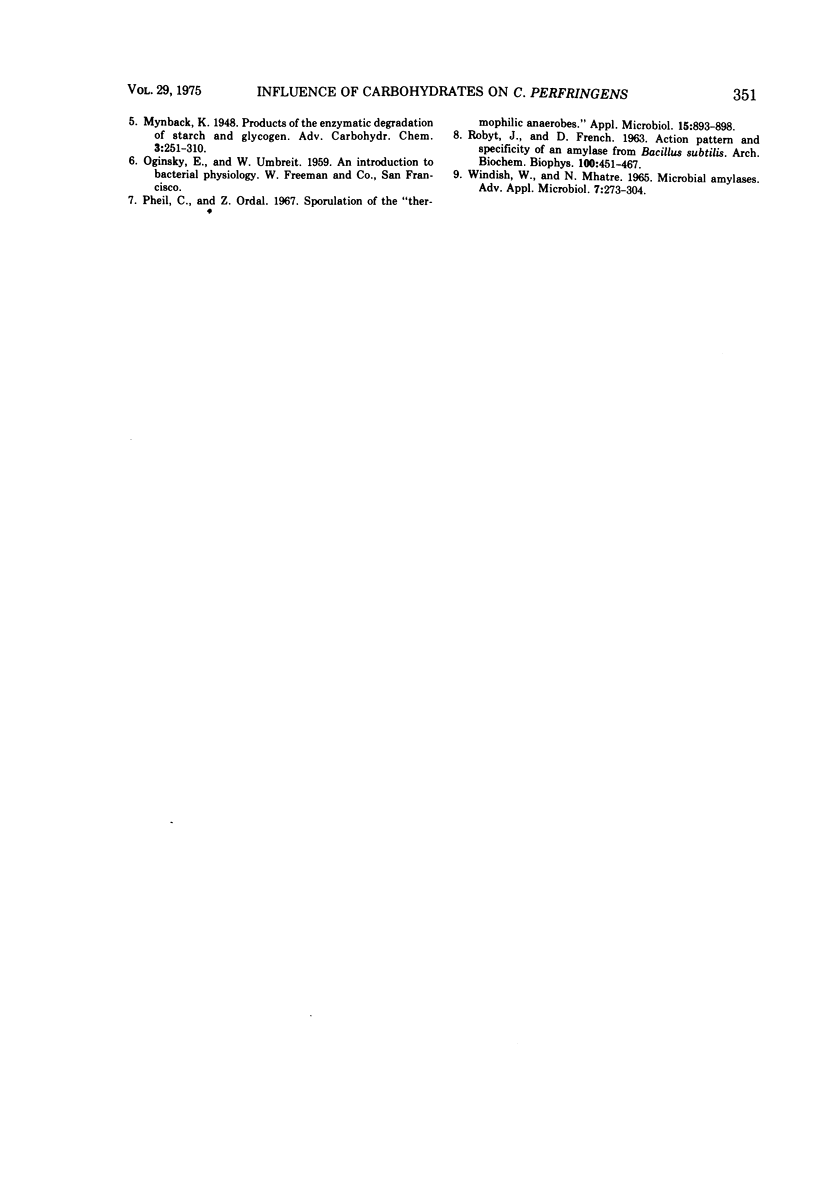Abstract
Growth and sporulation of Clostridium perfringens type A in Duncan and Strong (DS) sporulation medium was investigated. A biphasic growth response was found to be dependent on starch concentration. Maximal levels of heat-resistant spores were formed at a starch concentration of 0.40%. Addition of glucose, maltose, or maltotriose to a sporulating culture resulted in an immediate turbidity increase, indicating that biphasic growth in DS medium may be due to such starch degradation products. Amylose and, to a lesser extent, amylopectin resulted in biphasic growth when each replaced starch in the sporulation medium. A level of heat-resistant spores approximately equal to the control was produced with amylopectin but not amylose as the added carbohydrate. Addition of glucose or maltose to a DS medium without starch at stage II or III of sporulation did not alter the level of heat-resistant spores as compared with the level obtained in DS medium with starch. Omission of starch or glucose or maltose resulted in an approximately 100-fold decrease in the number of heat-resistant spores, although the percentage of sporulation (90%) was unaffected. The role of starch and amylopectin in the formation of heat-resistant spores probably involves the amylolytic production of utilizable short-chain glucose polymers that provides an energy source for the completion of sporulation.
Full text
PDF






Selected References
These references are in PubMed. This may not be the complete list of references from this article.
- DAY L. E., COSTILOW R. N. PHYSIOLOGY OF THE SPORULATION PROCESS IN CLOSTRIDIUM BOTULINUM. I. CORRELATION OF MORPHOLOGICAL CHANGES WITH CATABOLIC ACTIVITIES, SYNTHESIS OF DIPICOLINIC ACID, AND DEVELOPMENT OF HEAT RESISTANCE. J Bacteriol. 1964 Sep;88:690–694. doi: 10.1128/jb.88.3.690-694.1964. [DOI] [PMC free article] [PubMed] [Google Scholar]
- HANSON R. S., SRINIVASAN V. R., HALVORSON H. O. Biochemistry of sporulation. I. Metabolism of acetate by vegetative and sporulating cells. J Bacteriol. 1963 Feb;85:451–460. doi: 10.1128/jb.85.2.451-460.1963. [DOI] [PMC free article] [PubMed] [Google Scholar]
- Labbe R. G., Duncan C. L. Sporulation and enterotoxin production by Clostridium perfringens type A under conditions of controlled pH and temperature. Can J Microbiol. 1974 Nov;20(11):1493–1501. doi: 10.1139/m74-233. [DOI] [PubMed] [Google Scholar]
- Windish W. W., Mhatre N. S. Microbial amylases. Adv Appl Microbiol. 1965;7:273–304. doi: 10.1016/s0065-2164(08)70389-7. [DOI] [PubMed] [Google Scholar]


